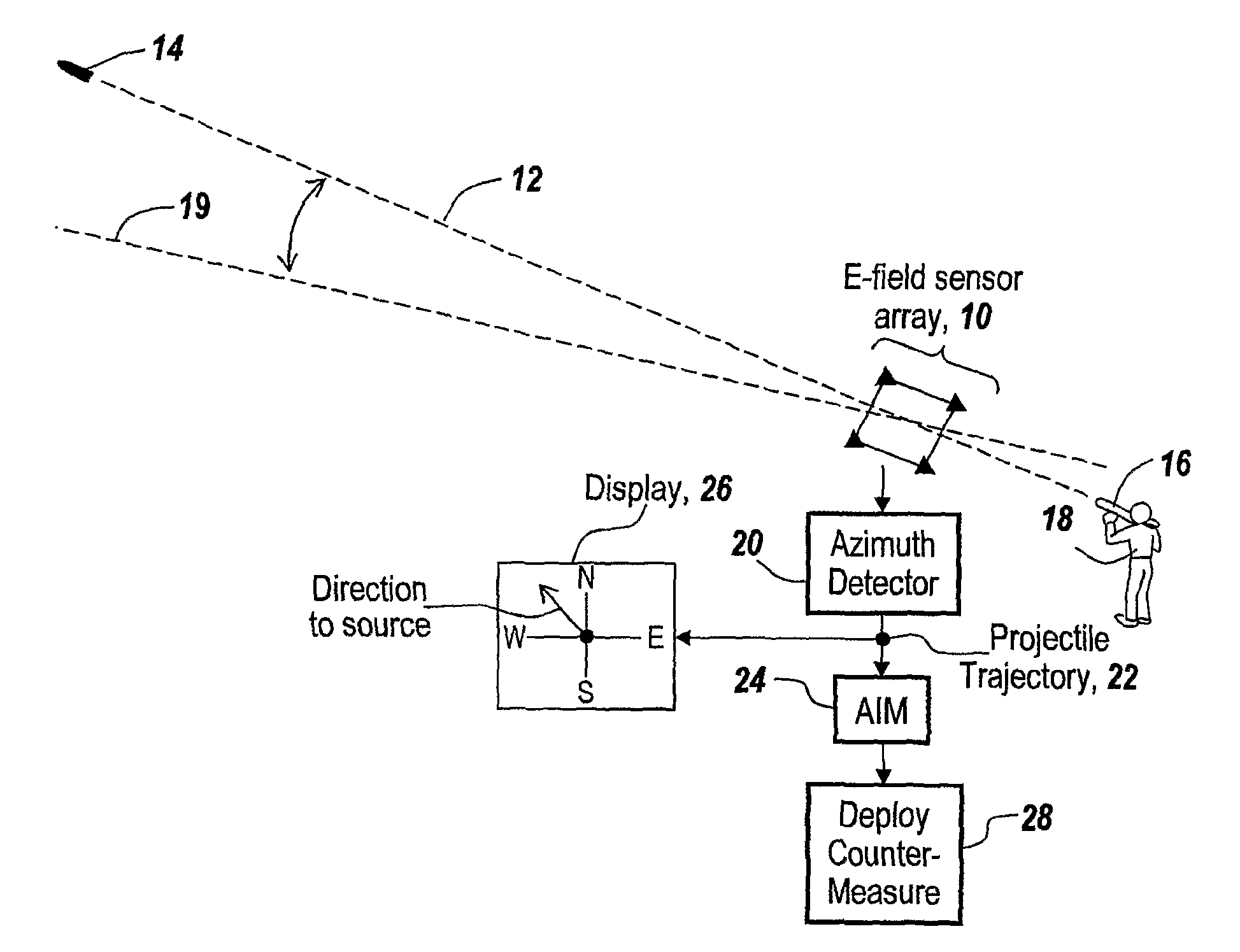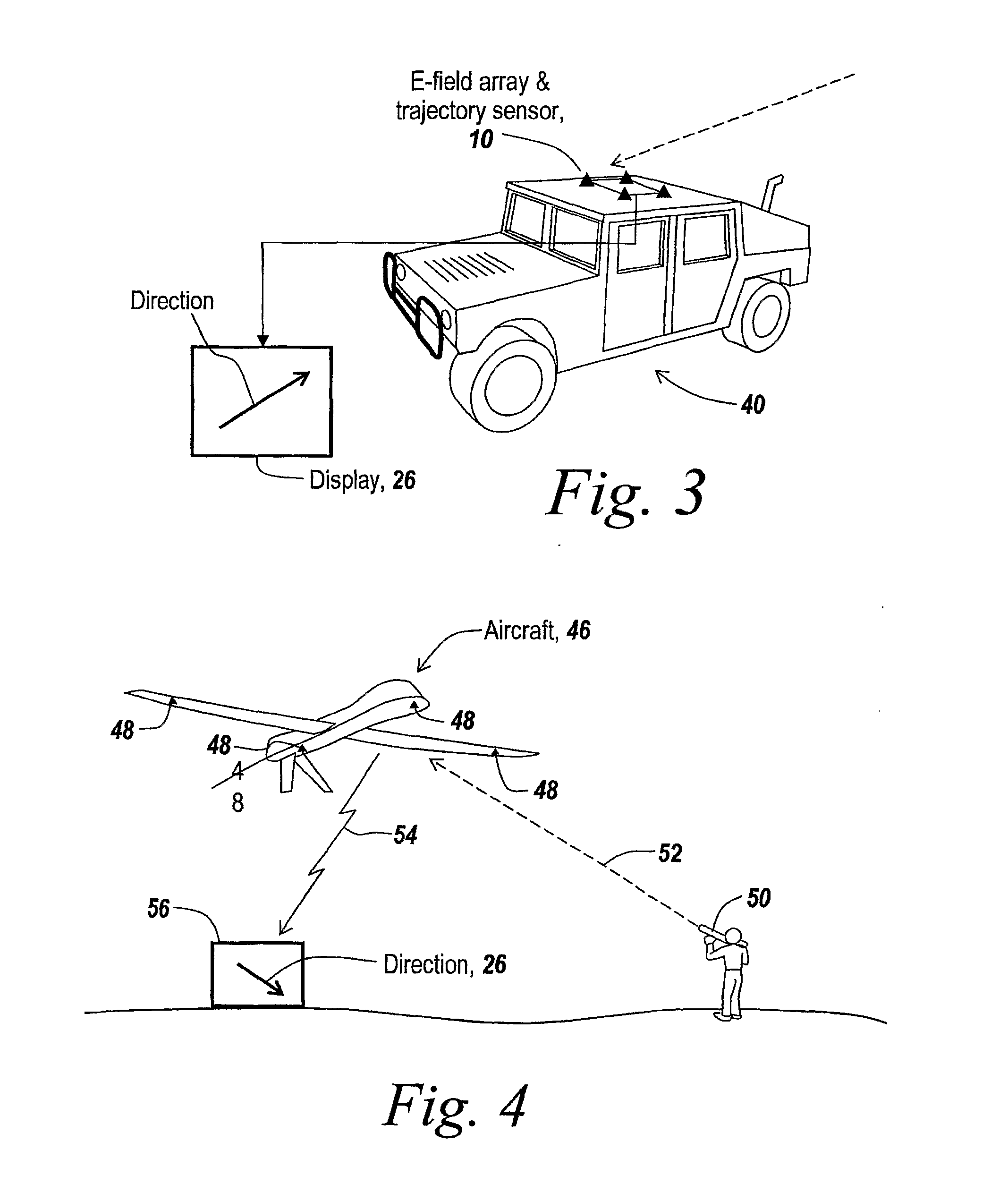Method and Apparatus for Detecting Sources of Projectiles
a projectile source and source technology, applied in the field of efield sensors, can solve the problems of difficult to determine the position of the closest approach to an acoustic sensor, it is virtually impossible to detect which individual sound trails belong to which shooters, and the acoustic means are not particularly useful in identifying the shooter or his location
- Summary
- Abstract
- Description
- Claims
- Application Information
AI Technical Summary
Benefits of technology
Problems solved by technology
Method used
Image
Examples
Embodiment Construction
[0043]As shown in FIG. 1, in the subject invention, an E-field sensor array 10 is used to detect the trajectory 12 of a projectile 14 as it passes near an E-field sensor, which projectile may be a bullet from a rifle 16 fired by an individual 18, with the trajectory measured from the E-field center line 19.
[0044]The disturbance in the local electric field caused by the passage of a charged projectile is detected by the E-field sensor array. The output of the array is coupled to a processing unit 20 that processes the output of the E-field sensors and outputs the projectile trajectory bearing 22. The bearing is either used to aim an ordnance illustrated at 24 or to display the direction to the source of the projectile as illustrated by display 26.
[0045]The aiming unit may be used to deploy any type of countermeasure, for instance such as the projection of a laser beam back to the source of the projectile. Additionally, the aiming unit may be used to aim a dazzler to disorient the ind...
PUM
 Login to View More
Login to View More Abstract
Description
Claims
Application Information
 Login to View More
Login to View More - R&D
- Intellectual Property
- Life Sciences
- Materials
- Tech Scout
- Unparalleled Data Quality
- Higher Quality Content
- 60% Fewer Hallucinations
Browse by: Latest US Patents, China's latest patents, Technical Efficacy Thesaurus, Application Domain, Technology Topic, Popular Technical Reports.
© 2025 PatSnap. All rights reserved.Legal|Privacy policy|Modern Slavery Act Transparency Statement|Sitemap|About US| Contact US: help@patsnap.com



